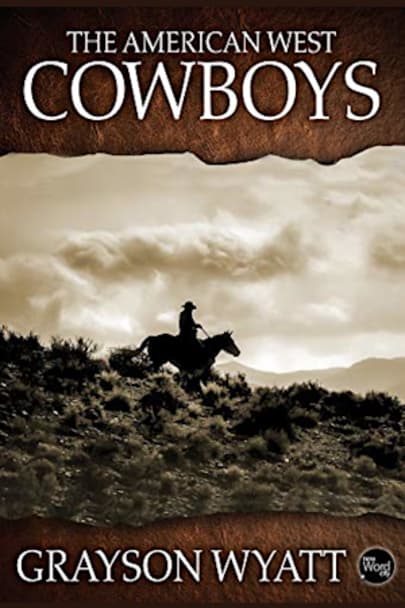Forged in dime novels, Wild West shows, and Hollywood films, the image of the American cowboy is largely a myth. But behind it were real men whose hard work and hard play, stoic toughness, and code of honor helped tame the American West. The epic cattle drives that were so much a part of the cowboys’ heyday lasted only an astonishingly brief two decades. But the cowboy is still a basic part of … the American character. Here, from historian Grayson Wyatt, is their surprising and little-told story.
more



Interesting about real cowboys.
If you like cowboys, and I do, then you will like this book
Good tome on the West and the cultures that lived that time. Hard work was the norm for a “cowpoke”.
The author describes the working cowboy in real terms rather than the legendary character of fiction.
A great job of detailing the events of a cowboy’s day to day life. Very accurate historically, with lots of side information that brings the story to life.
very good and factual.
Enjoyed reading about the realities of life on the range. Learned parts of history that you normally don’t read about in school or see on TV or the movies.
Fun read and informative about a fun subject.
I found The Cowboys to be entertaining and informative as the author uses numerous vignettes to give the reader a sense of the period through the experiencees of a few more or less typical characters. The main point that the book makes is that the era of the Cowboy was brief, even by American standards, lasting only about 20 years from the end of the Civil War to the mid 1880’s. Despite its brevity, the cowboys and their trial drives helped flesh out the landscape of the middle of the nation which was originally labeled the Great American Desert. While the land was too dry for most cash crops and unsuitable for large scale agriculture, it was the ideal environment for the Teaxas semi-ferile cattle with long scraggy horns (the longhorn). At the end of the war, estimates were that there were more than 1 million head of cattle in the washes and cutouts of the Texas ranges. The trick was how to get the product (the cattle) to the transportation (the railheads). The solution was to get the cows to walk the hundreds of miles which separated their home ranges from the railheads. Thus was born the trial drive, led by men who became legends in their own time like Oliver Loving and Charles Goodnight. Some of these men went on to become legendary cattle barons controlling ranches which were measured in millions of acres. The era of the cattle drives was brief, in large part because the cowboys showed that the Great American Desert could be useful and productive which then lured settlers in increasing numbers to the plains. Along with the settlers came the law and the means to enforce it, and with them came the end of the days of the cowboys. By focusing each chapter on a different aspect of the cowboys’ universe, the author gives his reader an inclusive look at this truly American phenomenon. He covers the individual cowboy, the cattle barons, the cow towns, and the lawmen who ruled them. His style is breezy, irreverent, and humerous, all of which made this an easy read which should appeal not only to the history buffs and the cowboy lovers, but to general audiences who are simply curious about this truly American period of history.
Real cowboy stories by various authors.